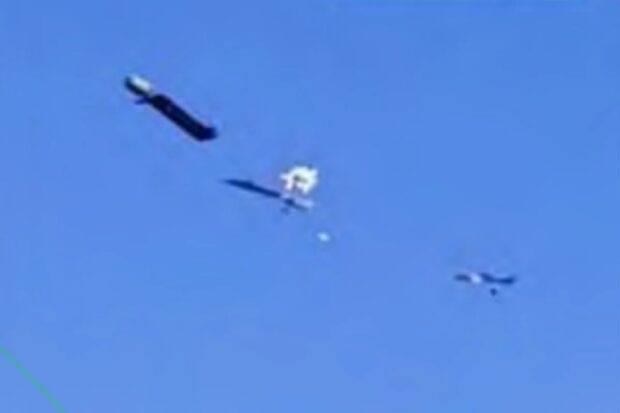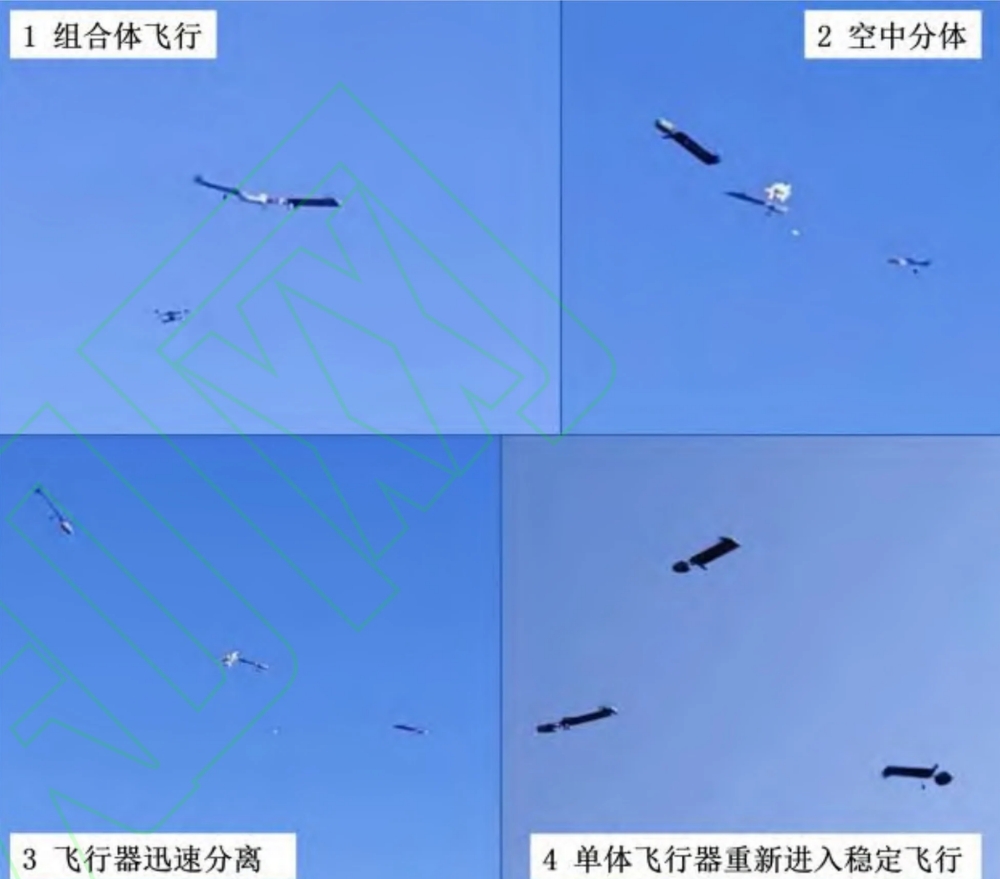Chinese scientists say they have developed a new type of war drone unlike any ever seen on the battlefield. At first glance, it resembles a consumer-grade Chinese DJI multirotor. However, once it reaches the target airspace it can split in the blink of an eye into two, three or even six smaller drones, depending on what is needed in battle.
Each of these drones has only one blade but can hover and move freely like a regular drone. They can communicate with each other and each could play a specific role – such as command, reconnaissance, tracking and even launching an attack – while collaborating to complete a mission.
The research, led by Professor Shi Zhiwei from Nanjing University of Aeronautics and Astronautics, is a breakthrough in air separation technology.
For years, teams around the world have attempted to devise a practical and efficient method for the controlled separation of drones mid-air.
The technology could change the battlefield. When a drone swarm appears on enemy radar screens, air-defence systems allocate anti-drone weapon resources and means based on the number of drones.
However, if the drone swarm suddenly increases in size, not only will the defence system be overwhelmed, but it poses a psychological shock that could hamper effective resistance from enemy commanders and soldiers.
Progress in this technology has been slow because flight efficiency is significantly decreased when traditional drones are combined.
In a peer-reviewed paper published in Acta Aeronautica et Astronautica Sinica journal last month, Shi’s team said it had overcome this challenge. The drone combination, it said, boasted a flight efficiency nearly twice that of a similar sized multirotor drone.
When these small drones were united, they could fly faster and further than they could alone. Even after separation, their flight efficiency remained more than 40 per cent higher than that of traditional small drones – the first demonstration that combined drones could outperform single drones in any flight state.
China is the world’s leading designer and producer of drones, showing excellent price and energy efficiency. However, “combined design and air-separation technology provide the possibility to further enhance the effectiveness of drone use”, Shi and his colleagues wrote in the paper.
The inspiration for Shi’s team came from an unlikely source: the maple seed. Long admired by botanists for its ability to be carried vast distances by the wind, the maple seed’s unique structure – a wing-like cotyledon that rotates around the seed – provides lift and allows it to hover or even ascend in windy conditions.
In 2011, researchers at Lockheed Martin drew inspiration from the maple seed to develop a drone with a constantly rotating lens capable of stable target tracking and high-definition imaging.
However, limited by its energy and payload capacity, it could not fly for extended periods or tackle complex tasks alone.
Shi’s team says maple seed-inspired drones could be taken from the laboratory to production lines in China to revolutionise future warfare. However, the key is to assemble them to achieve efficient long-distance flight.
To this end and after numerous failures, they conducted extensive and detailed wind tunnel tests and finally found a blade shape that supported both combined flight and single flight efficiency.
The amalgamation of several single-blade drones introduces a distinct set of physical characteristics and flight control logic, departing radically from the familiar multi-rotor designs. Therefore, the team needed to build a physical model almost from scratch and design unique flight control software.
High-speed communication between the small drones is also a challenge, according to Shi.
In flight tests, both the combined body and individual drones were stable. Although the maximum flight speed of the combined body could not match that of some high-performance military drones, it could launch small drones so rapidly once it reached the target airspace the opponent might not even have time to determine what was happening.
The scientists said a soldier could carry several such modules and assemble different functions and quantities of drones on-site to complete missions as needed, affording China’s People’s Liberation Army a greater tactical advantage over its opponents.
Source: South China Morning Post
Chinese scientists have developed a new type of war drone that can rapidly multiply midair, a tactical shock and awe phenomenon against potential adversaries like the US, the South China Morning Post (SCMP) reported.
The new drone is similar to a consumer-grade Chinese DJI multirotor, which can split into two, three or even six smaller drones depending on battle needs.
Each drone has only one blade but can hover, move freely like a regular drone and communicate with other drones. Each can also play a specific role such as command, surveillance, tracking and even attack while collaborating to complete a mission.
SCMP notes that progress in this technology has been slow due to the significantly decreased flight efficiency of traditional drones combined.
However, a research team led by Professor Shi Zhiwei from Nanjing University’s School of Aeronautics and Astronautics claims to have overcome this challenge, according to a peer-reviewed paper published in Acta Aeronautica et Astronautica Sinica journal last month.
Shi’s team said the drone combination boasted a flight efficiency nearly twice that of a similar-sized multirotor drone. Even after separation, the team says their flight efficiency remained more than 40% higher than traditional small drones – the apparent first demonstration that combined drones could outperform single drones in any flight state.
SCMP points out that China’s one-blade drone, which can be launched by hand like throwing a boomerang and take off vertically from the ground, resembles Lockheed Martin’s “Samarai” drone, which can hover in midair and land in a specific area.
However, SCMP says that Lockheed Martin’s drone is constrained by its endurance, payload capacity and limited autonomy. The source also notes that while the US envisioned deploying these drones from large aircraft, they risked being shot down.
It also says that other Western teams have developed similar models but so far without large-scale practical applications.


